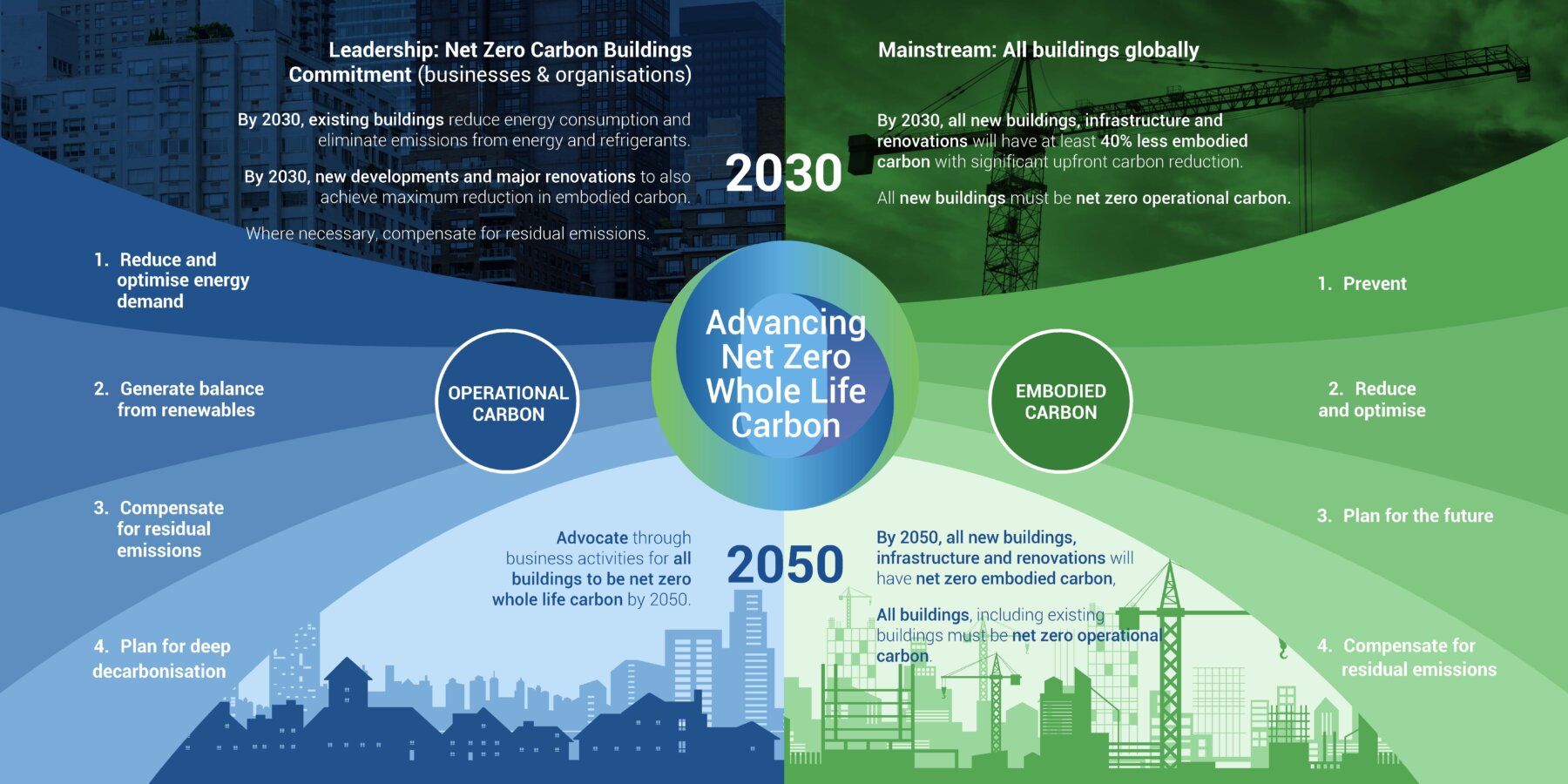
WorldGBC’s Whole Life Carbon Vision sets out our framework for achieving total sector decarbonisation, including key target dates, definitions for net zero operational carbon and net zero whole life carbon buildings, and the key principles to ensure best practice in achieving these targets.
WorldGBC recognises that in most situations, net zero energy buildings, i.e. buildings that generate 100% of their energy needs on-site, are not feasible, and that net zero embodied carbon should be pursued as part of a whole lifecycle approach to carbon reduction that includes net zero operational carbon.
Therefore a net zero carbon vision that acknowledges the time value of carbon emissions from materials and construction, as well as recognising the role of offsets in facilitating the transition, is more appropriate for the mass scale required to achieve the urgent and significant carbon emission reductions necessary to align with IPCC guidance.
We believe that this enormous challenge will be achieved through radical cross-sector collaboration, and our Green Building Councils are leading the way.


WorldGBC recommends that the building and construction sector pursues a strategy to compensate for the total impacts of its activities that prioritises a reduction first approach , and embraces the potential of the offsets market to facilitate positive social and environmental impact in pursuit of overall net zero emissions. See the guiding principles below.
Definition
When the amount of carbon dioxide emissions associated with building operations on an annual basis is reduced (highly energy efficient and fully powered from on-site and/or off-site renewable energy sources) to a level that is consistent with reaching net zero at the global or sector level in 1.5oC pathways. Any residual emissions that remain unfeasible to eliminate should be neutralised through carbon removals.
Guiding Principles
Definition
When, in addition to net zero operational carbon, upfront carbon and other embodied carbon across the building lifecycle is reduced to a level that is consistent with reaching net zero at the global or sector level in 1.5oC pathways. Any residual emissions that remain unfeasible to eliminate should be neutralised through carbon removals1.
Guiding Principles
1. Science Based Targets, ‘Foundations for Science-based Net Zero Target Setting in the Corporate Sector’ (2020)